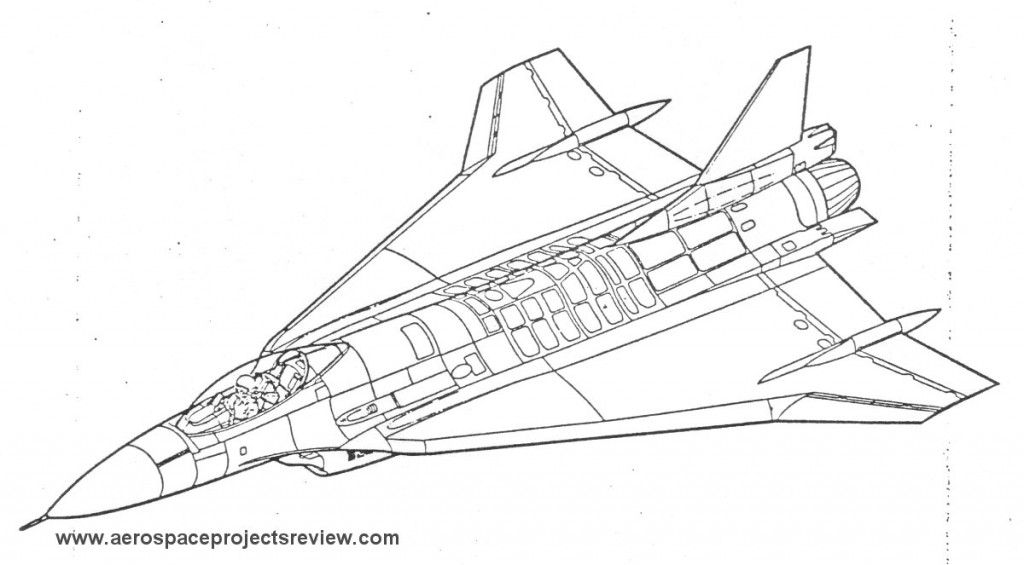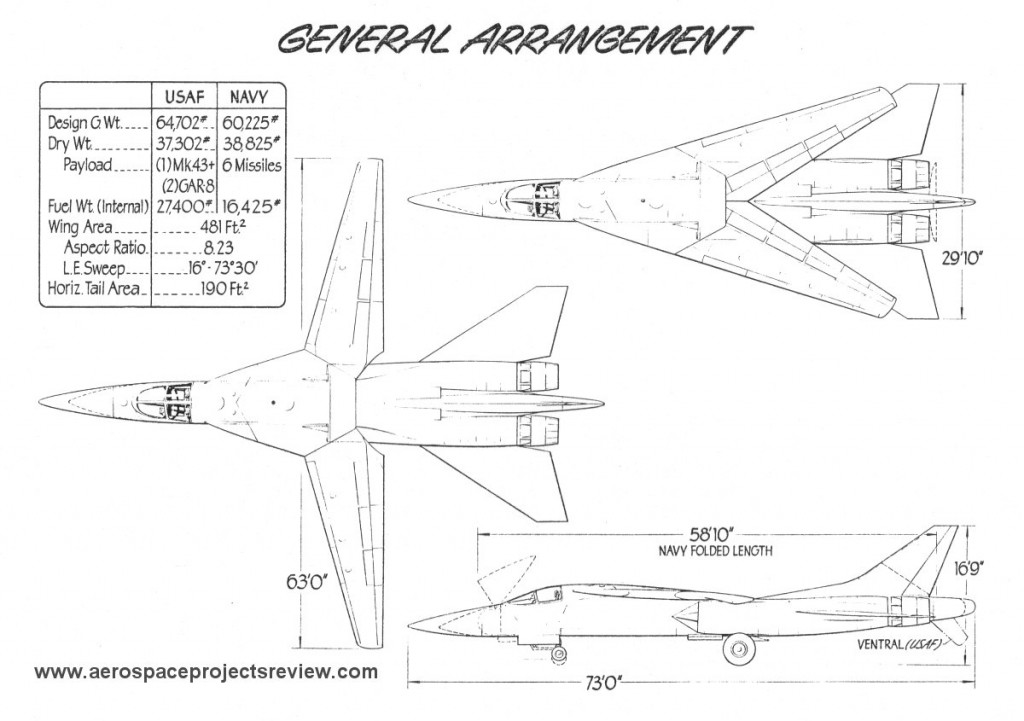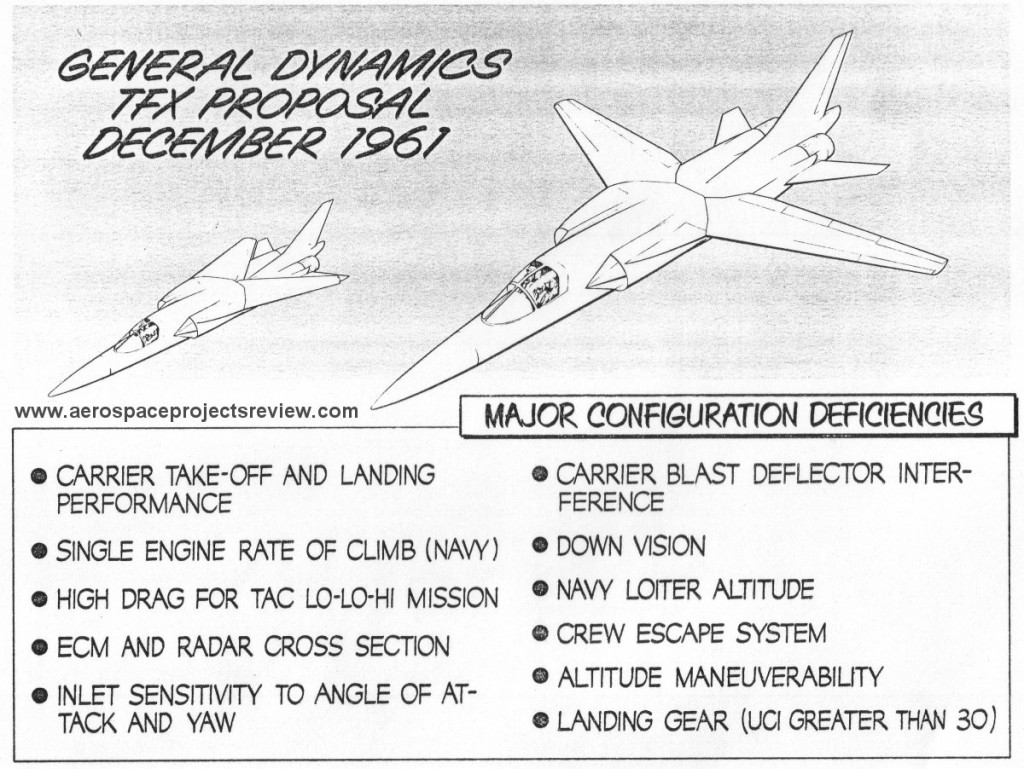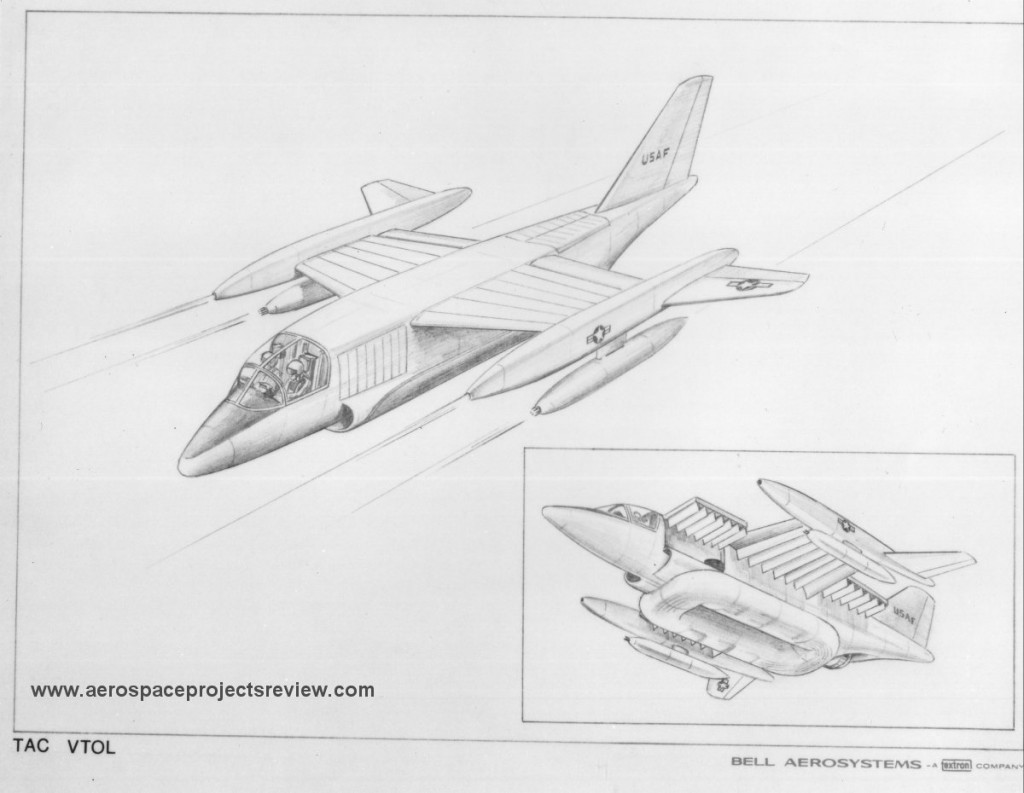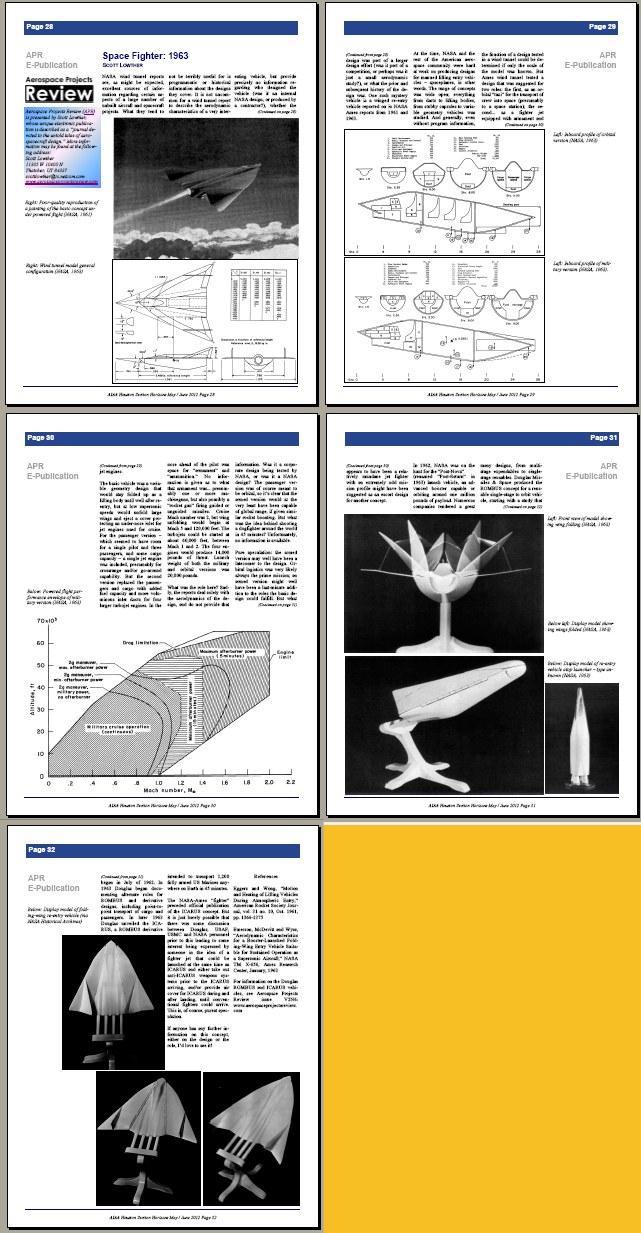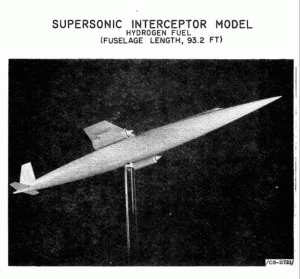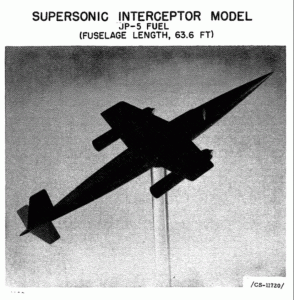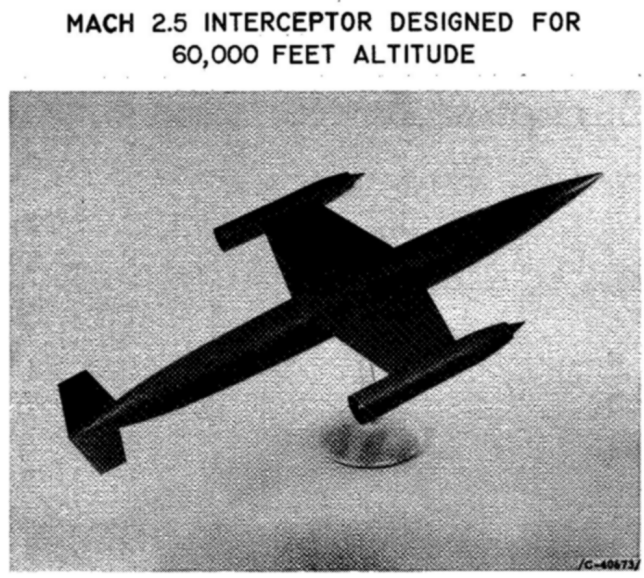The design for what became the F-16XL began in 1977 as the Supersonic Cruise and Maneuver Prototype at General Dynamics-Fort Worth. The idea was to incorporate lessons learned in SST design into military aircraft. The SCAMP was to be a highly modified F-16 with a 56-inch fuselage stretch, an all-new cranked-delta wing, and an all-new vertical tail, along with many smaller changes. The use of computers – already new with the baseline F-16 – would allow the aircraft to be flown… otherwise unlikely, due to the relaxed static stability of the design (i.e. left to it’s own the design would oscillate in attitude and angle of attack until it went truly unstable). The SCAMP would be capable of carrying a much greater payload than the F-16, such as a sizable bombload.
The F-16XL as actually built used an F-16 vertical tail. But this earlier SCAMP design, from a February 1980 report, used a new all-moving vertical tail. Even earlier designs used all-moving wingtips, which were themselves the horizontal stabilizers from a regular F-16. While that idea undoubtedly had merit, it would not allow for missiles to be carried on the wingtips, and thus fixed wingtips were designed in.
